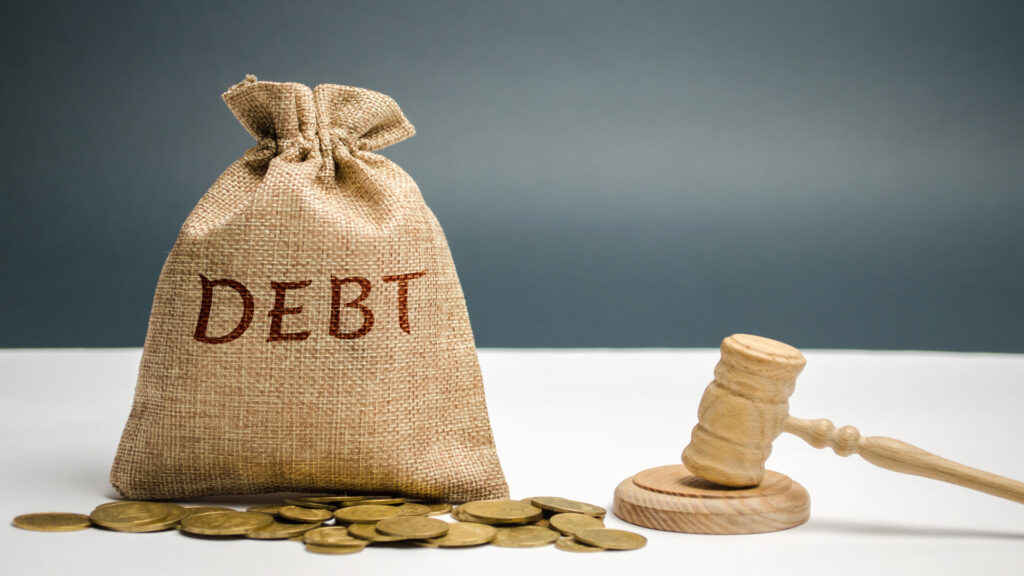Rapid debt – today we talk about this! Debt has become an increasingly common part of the American financial landscape, with many individuals grappling with various forms of debt, from credit cards and personal loans to student loans and mortgages. While some debt can be considered “good” when it’s an investment in your future, such as education or home ownership, excessive debt can be a significant burden, impacting financial stability and overall well-being.
This guide aims to provide practical and effective strategies for Americans looking to accelerate their debt repayment journey, offering a path towards financial freedom and peace of mind.

Understanding Your Debt Situation
Before embarking on a rapid debt repayment plan, it’s crucial to gain a comprehensive understanding of your current debt situation. This involves taking a thorough inventory of all your debts, including credit card balances, personal loans, student loans, auto loans, and any other outstanding debts.
For each debt, note down the creditor, the outstanding balance, the interest rate, and the minimum monthly payment. This process, while potentially daunting, is an essential first step in developing an effective repayment strategy.
Once you have a clear picture of your debts, take the time to analyze your spending habits and overall financial situation. Look at your monthly income, fixed expenses, and discretionary spending. This analysis will help you identify areas where you can potentially cut back on expenses and redirect funds towards debt repayment.
Remember, the goal is to free up as much money as possible to put towards debt without compromising your essential needs.
It’s also important to check your credit report during this phase. Your credit report will provide a comprehensive overview of your debts and payment history. In the United States, you’re entitled to one free credit report annually from each of the three major credit bureaus (Equifax, Experian, and TransUnion) through AnnualCreditReport.com.
Reviewing your credit report can help you catch any errors or forgotten debts, ensuring that your debt repayment plan is comprehensive and accurate.
Developing a Debt Repayment Strategy – Rapid Debt
The Debt Avalanche Method
The debt avalanche method is a popular and mathematically optimal approach to debt repayment. With this strategy, you focus on paying off the debt with the highest interest rate first while making minimum payments on all other debts. Once the highest-interest debt is paid off, you move on to the debt with the next highest interest rate, and so on.
The primary advantage of the debt avalanche method is that it minimizes the total amount of interest you’ll pay over time, potentially saving you significant money in the long run. This approach is particularly effective for those with high-interest credit card debt. While it may take longer to see the first debt completely paid off compared to other methods, the long-term savings make it an attractive option for many.
To implement the debt avalanche method, list your debts in order from highest to lowest interest rate. Allocate any extra funds you’ve freed up from your budget analysis towards the highest-interest debt while maintaining minimum payments on the others. As each debt is paid off, roll the amount you were paying on that debt into the next highest-interest debt, creating a “snowball” effect that accelerates your debt repayment over time.
The Debt Snowball Method – Rapid Debt
The debt snowball method, popularized by personal finance expert Dave Ramsey, takes a different approach. With this strategy, you focus on paying off your smallest debt first, regardless of interest rate, while making minimum payments on larger debts. Once the smallest debt is paid off, you move on to the next smallest, and so on.
The primary advantage of the debt snowball method is psychological. Paying off smaller debts quickly provides a series of “quick wins” that can boost motivation and momentum in your debt repayment journey. This can be particularly beneficial for those who might feel overwhelmed by their debt situation and need the encouragement of seeing progress to stay committed to their repayment plan.
To implement the debt snowball method, list your debts from smallest to largest balance. Direct any extra funds towards the smallest debt while maintaining minimum payments on the others. As each debt is paid off, redirect the amount you were paying on that debt to the next smallest debt, creating a “snowball” effect that builds momentum as you tackle larger debts.
Accelerating Debt Repayment – Rapid Debt
Increasing Your Income
One of the most effective ways to accelerate debt repayment is to increase your income and dedicate the additional funds to debt reduction. In today’s gig economy, there are numerous opportunities for Americans to supplement their primary income:
- Part-time work: Consider taking on a part-time job in the evenings or on weekends.
- Freelancing: Utilize your skills to offer freelance services in areas like writing, graphic design, or programming.
- Selling items: Sell unwanted items online through platforms like eBay, Facebook Marketplace, or Craigslist.
- Renting out space: If you have a spare room or parking space, consider renting it out through platforms like Airbnb or SpotHero.
- Participating in the sharing economy: Drive for ride-sharing services or deliver food during your free time.
Remember, the key is to treat any additional income as a tool for debt repayment rather than an opportunity for increased spending. Direct all or most of this extra income towards your debt to maximize its impact on your repayment timeline.
Reducing Expenses and Living Frugally
Alongside increasing income, reducing expenses can free up significant funds for debt repayment. This often involves adopting a more frugal lifestyle, at least temporarily. Here are some strategies to consider:
- Create a bare-bones budget: Identify your essential expenses and cut back drastically on non-essentials.
- Negotiate bills: Contact your service providers (cable, internet, phone) to negotiate better rates.
- Use coupons and cash-back apps: Take advantage of discounts and cash-back opportunities for necessary purchases.
- Cook at home: Reduce dining out and focus on home-cooked meals to save on food expenses.
- Cancel subscriptions: Review your subscriptions and cancel those you don’t use frequently.
- Use public transportation or carpool: Reduce transportation costs by using public transit or sharing rides.
While some of these changes may be challenging, remember that they are temporary sacrifices in service of your long-term financial health. The money saved through these efforts can significantly accelerate your debt repayment journey.
Leveraging Financial Tools and Resources
Debt Consolidation
Debt consolidation can be an effective tool for simplifying your debt repayment process and potentially reducing your interest rates. This involves taking out a new loan to pay off multiple existing debts, leaving you with a single monthly payment, often at a lower interest rate. Common debt consolidation options for Americans include:
- Personal loans: Many banks and online lenders offer personal loans for debt consolidation.
- Balance transfer credit cards: These cards offer low or 0% introductory APR periods, allowing you to transfer high-interest credit card debt and save on interest.
- Home equity loans or lines of credit: For homeowners, these options can provide lower interest rates, though they put your home at risk if you default.
When considering debt consolidation, carefully compare the terms, fees, and interest rates of different options. Ensure that the new loan truly offers savings and doesn’t simply extend your repayment period without significant interest reduction.
Credit Counseling and Debt Management Plans – Rapid debt
If you’re feeling overwhelmed by your debt situation, consider seeking help from a reputable credit counseling agency. In the United States, many non-profit credit counseling organizations offer free or low-cost services to help individuals manage their debt. These agencies can provide:
- Personalized financial advice
- Assistance in creating a budget
- Negotiation with creditors on your behalf
- Debt management plans (DMPs) that can lower interest rates and consolidate payments
When choosing a credit counseling agency, look for organizations accredited by the National Foundation for Credit Counseling (NFCC) or the Financial Counseling Association of America (FCAA). Be cautious of agencies that charge high fees or make promises that seem too good to be true.
Conclusion
Rapidly paying off debt requires commitment, discipline, and often significant lifestyle changes. However, the financial freedom and peace of mind that come with being debt-free are well worth the effort. By understanding your debt situation, choosing an appropriate repayment strategy, increasing income, reducing expenses, and leveraging available financial tools, you can accelerate your journey towards financial independence.
Remember, the path to debt freedom is not always smooth or quick, but every step you take brings you closer to your goal. Stay focused on your long-term financial health, celebrate small victories along the way, and don’t hesitate to seek professional advice if you need additional guidance. With persistence and the right strategies, you can overcome your debt and build a strong foundation for a secure financial future. Rapid debt – do you understand it?

